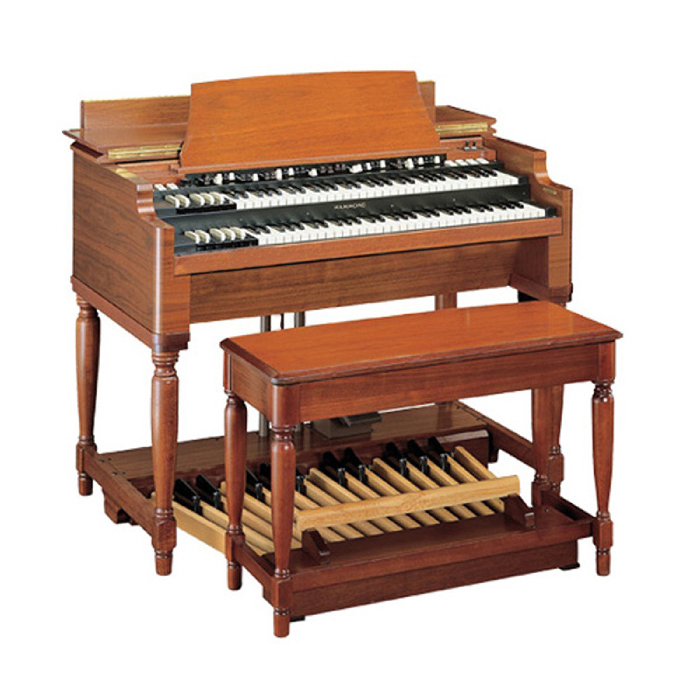The HAMMOND ORGAN
North Suburban HAMMOND ORGAN Service
The Hammond Organ was the first commercially practical electronic organ and hundreds of thousands have been sold during the company’s long history. For this article let’s look at the traditional Hammond, that is, the instrument which Laurens Hammond and his engineers developed and which made a millionaire out of this former clockmaker. Newer technologies have made modern Hammonds and other electronic organs and keyboard instruments quite different from their earlier counterparts, but the traditional Hammond was and still is a very widely known and used instrument. It also has some remarkable characteristics that make it a great tool for both tuning other instruments and also learning about their sounds. For those of you who like interesting machinery, the Hammond also will hold great appeal as you see how it works in some detail.
The traditional Hammond organ is not really an organ at all. It is an electromagnetic electro-mechanical keyboard instrument that uses traditional vacuum tube technology for amplification and loudspeakers to be heard. It resembles a pipe organ in its basic features and playing approach and it can be used as a viable substitute for a pipe organ if neither space nor funding allow installation of a real organ, which is always preferable to anything that is an imitation.
As you can see by figures one and two, they look a lot like the consoles of traditional pipe organs with their double keyboards and bass pedals at floor level. They differ completely from traditional pipe organs in their method of tone production and also in their means of creating different tonal effects or sounds. The way that the Hammond allows a musician to use the instrument to produce a given tonality is an excellent study in the development of complex tones and as such it can show us a lot about the sounds you get from many other musical instruments. Furthermore, a traditional Hammond’s unique tone generation system can never get out of tune.* You can use the instrument as a pitch standard if you need stable and accurate reference tones for tuning anything else musically tunable.

Figure 1, is a view of a model B3 console. Copying the classic design of older classical keyboard instruments, it stands on four legs. This was the most famous instrument that Hammond made, and it enjoyed a twenty year production run with very few design changes. Actually, it is a direct descendent of and closely resembles the early model A Hammond of 1937, which was the first commercially practical electronic substitute for a pipe organ. The B3 appeared in 1954; most of its internal parts being identical to those of the original 1937 Hammond model A. The same instrument was also available in a slightly different console style with solid sides and back rather than the four legged style you see in figure one. In this console style, it was called a C3. Figure two.

Hammond’s most significant ideas concerned generating the basic tones of the instrument and the development of many different tonal effects, both of which are so singular that they put the Hammond in a class of its own as a unique, patentable musical instrument.
Here we shall examine via pictures, diagrams, and Flash movies and sound clips what a Hammond is, what it looks like inside, and why it has secured for itself such an eminent and enduring position in the world of music.
Please note. FLASH is no longer supported by the W3C or by any modern browsers. I am in the process of replacing simple Flash movies with animated GIFs and any Flash sound clips with other types. There should be presently no operating Flash content on this website as of 1 1 22."
Previous page Page 2. Next page